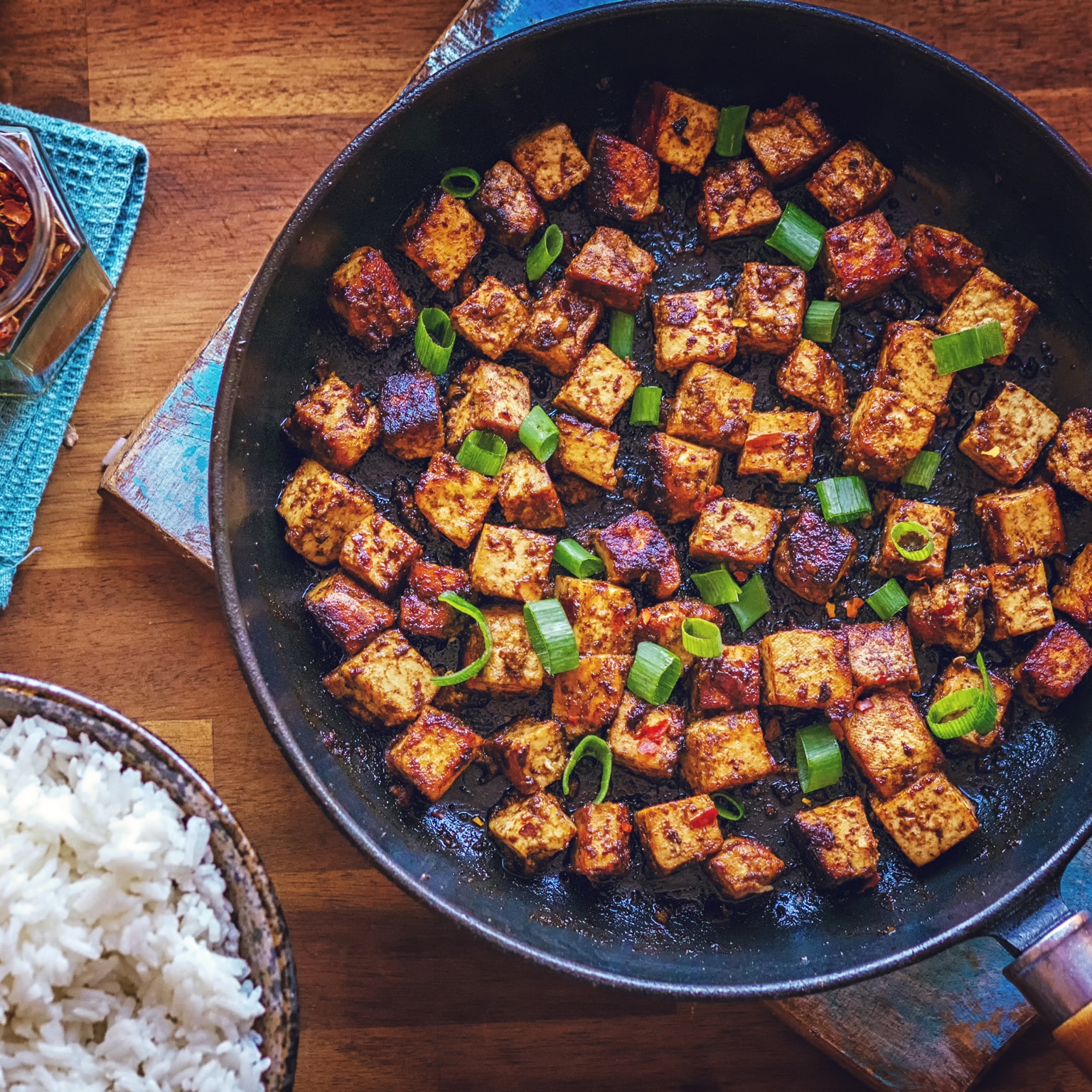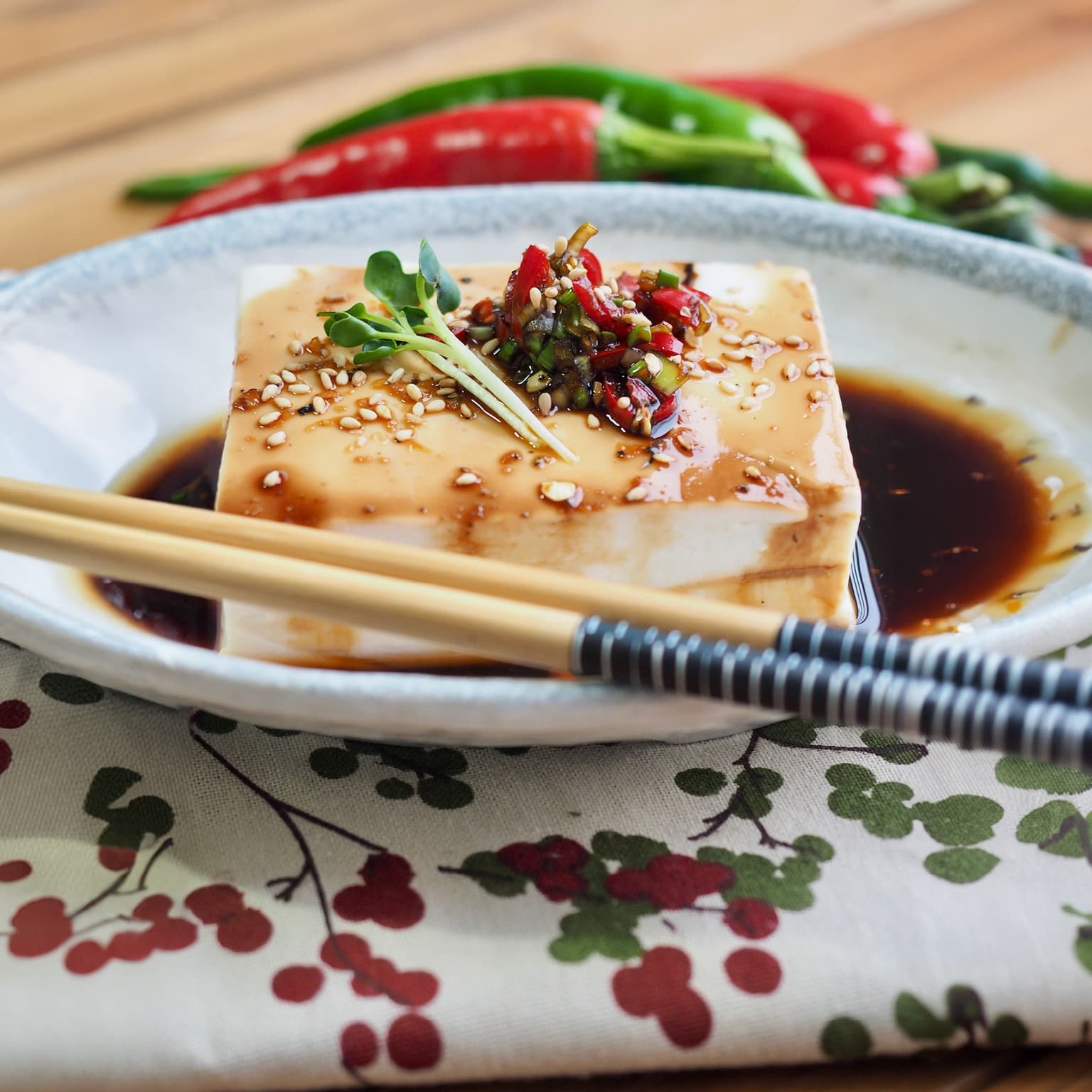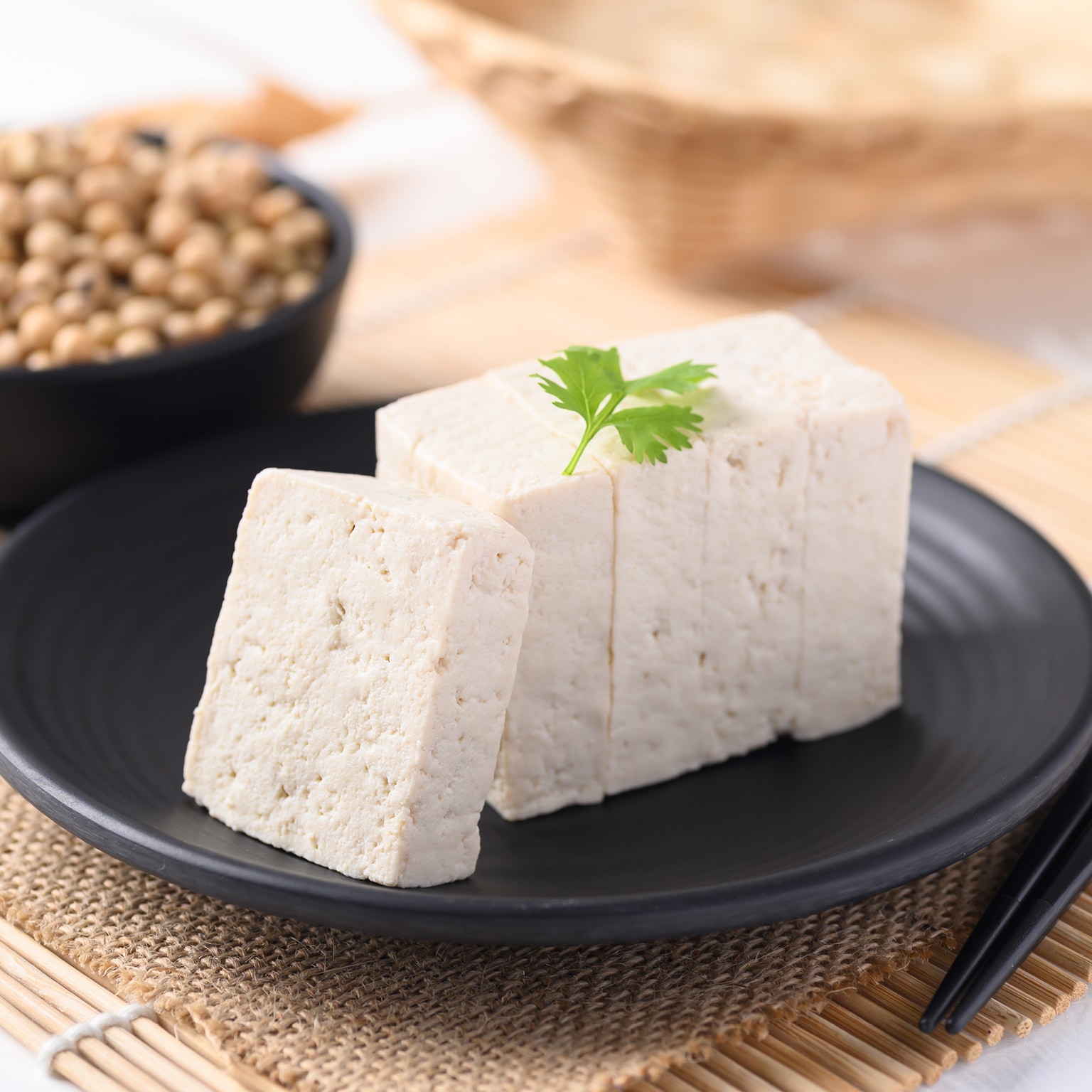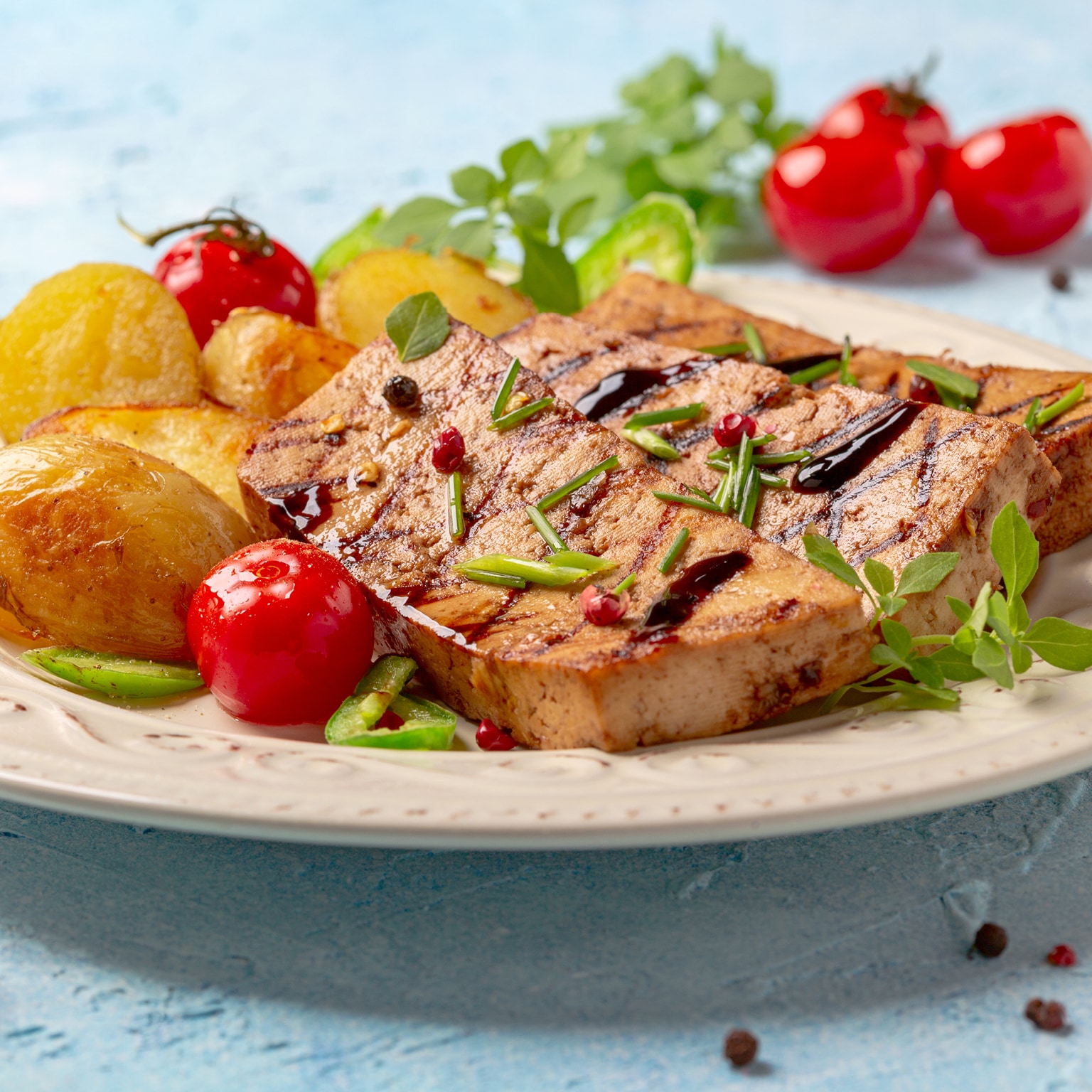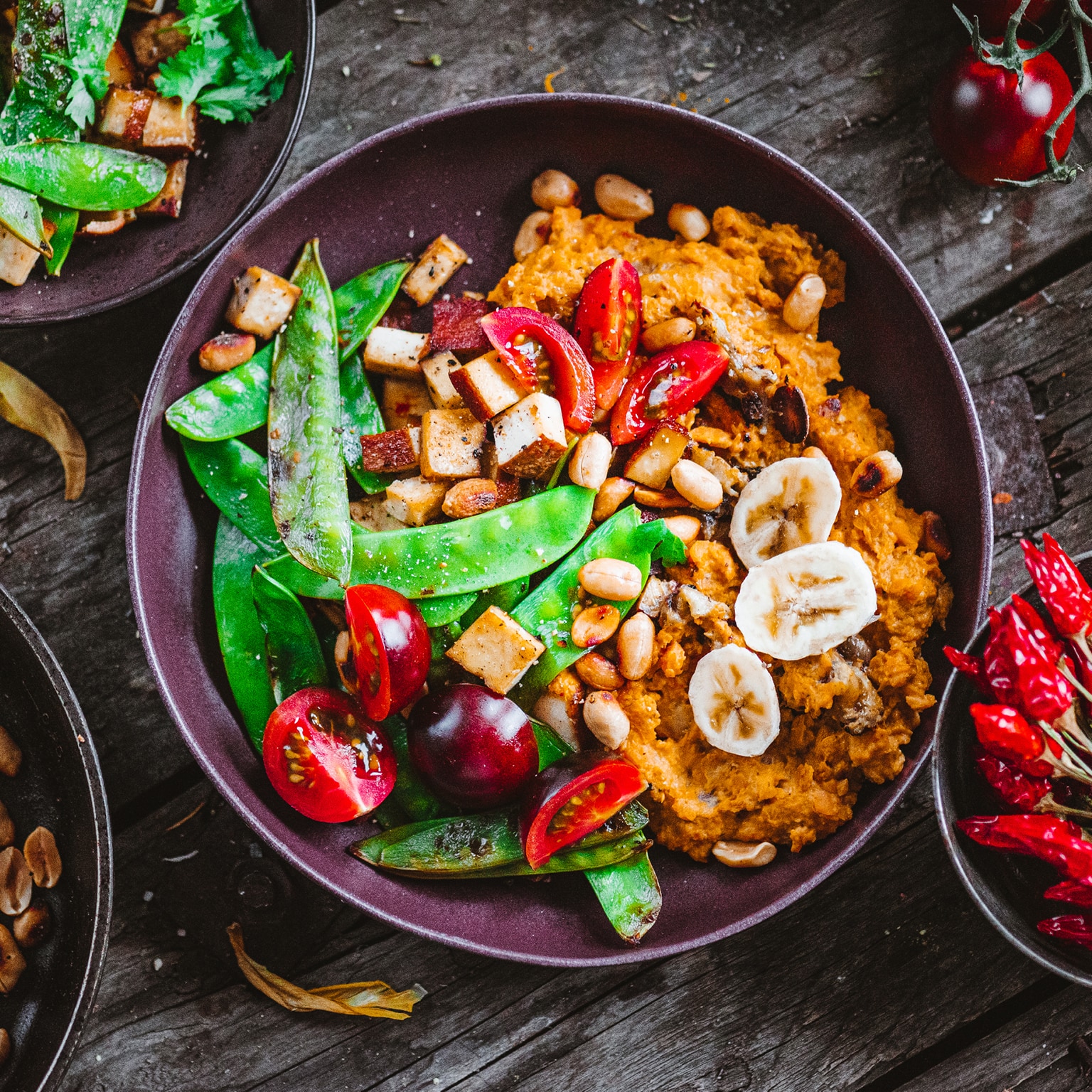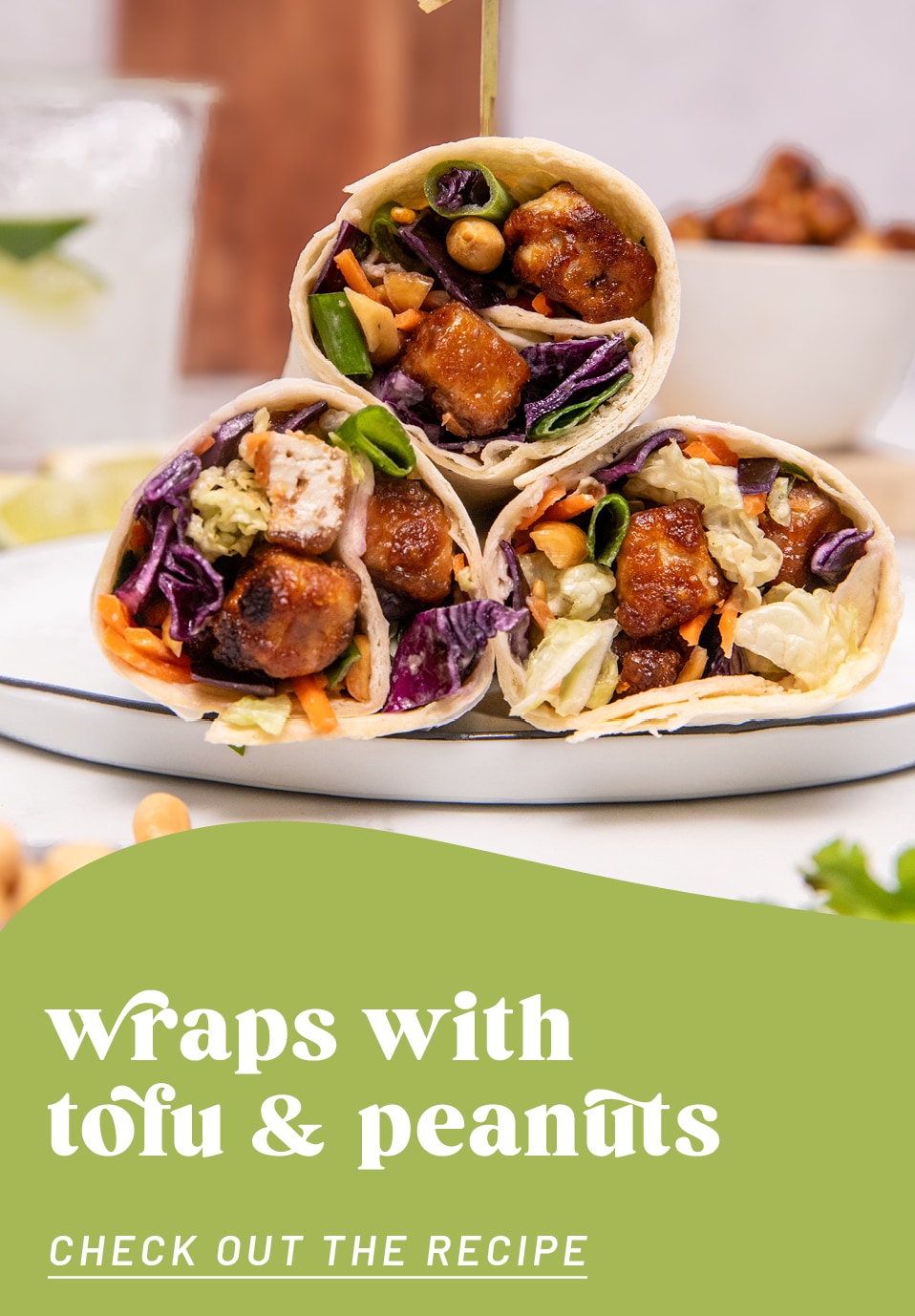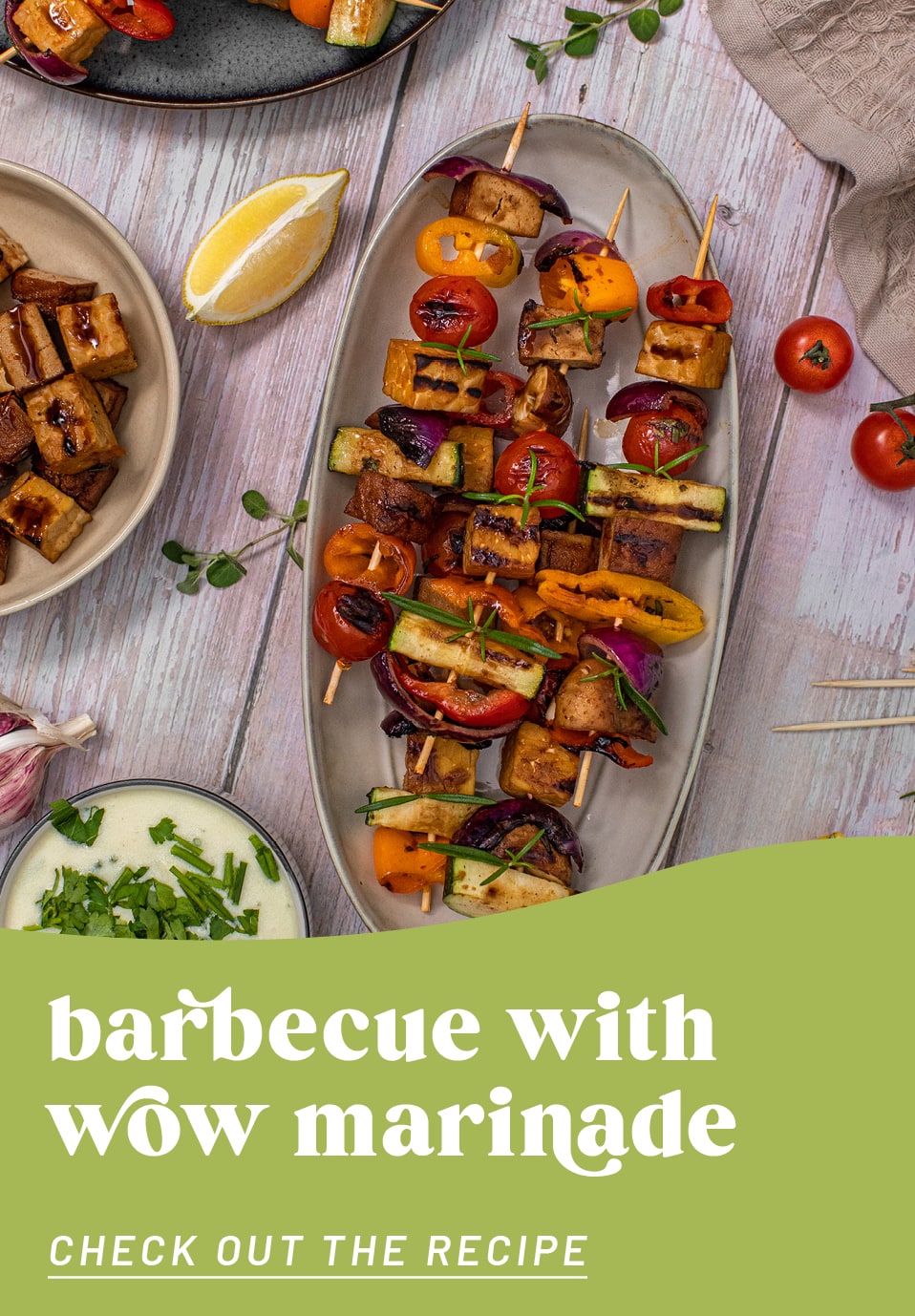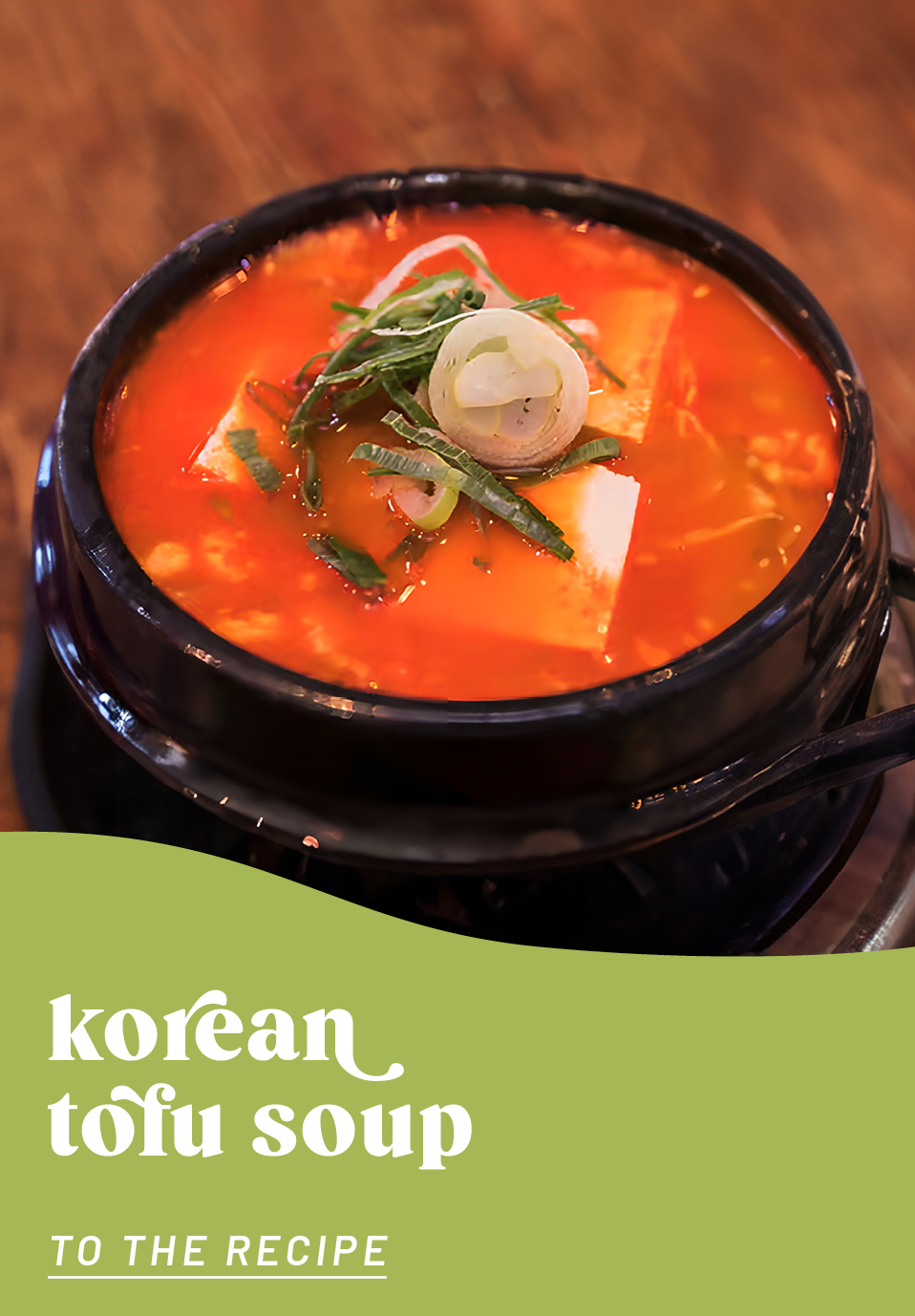All-time veganer Star
Preparing Tofu well
For some people, tofu is an indispensable ‘kitchen superhero’ in a vegan or vegetarian diet, for others it is still - but this won’t be the case for long - mildly ridiculed. With our tips & tricks, the white soya blocks will become the perfect ingredient in your diet – versatile and delicious! It all depends on the right way to prepare it. Whether in a pan, in the oven or on the barbeque, it should be quick and taste delicious. We'll show you how.
1. Buying the right kind of tofu
Not all tofu is the same. As with many other ingredients, it's all about knowing what to look for – and, of course, the quality. Poorly made tofu is no different from overcooked pasta or mushy cauliflower.
Tofu basically consists of soya beans and coagulants, which ensure that the protein in the soya drink separates from the whey. Nigari, which is obtained from seawater, is traditionally used for this purpose. However, lemon juice is also used. The consistency of the tofu varies depending on the coagulant. However, there is a whole variety of soya beans and manufacturers' recipes also differ. This means that even the basic products you can buy have their own flavour, texture and consistency. And tastes tend to differ.
Did you know that you have different types of tofu depending on the dish? We reveal the secret of the different types ...
Tofu is usually referred to as natural tofu, for example from Vantastic or Taifun. You use it to create your fried tofu strips or as a meat substitute in curries, and it is also used as a substitute for many sausages. Of course, the proportion of liquid can vary from manufacturer to manufacturer. Choose your natural tofu according to how firm you want it to be.
Silken tofu generally contains a lot of liquid. We like it because it retains its delicate consistency during preparation. Silken tofu is ideal for making creams and dips, and even desserts. It can be puréed perfectly. We also recommend it - together with kala namak - as a base for vegan scrambled egg substitutes.
You will also be familiar with various kinds of tofu flavoured with herbs or tomatoes and olives, for example. As well as the very popular smoked tofu. These kinds of tofu are delicious on their own or as a topping on bread! Smoked tofu is particularly tasty when seared and can be a great substitute for bacon, like this one from Lord of Tofu, which you should definitely try in ‘bacon-flavoured’ recipes. It also works well in stews and curries.
2. Dehydrating tofu
You can remove excess water from your tofu with a few very simple tricks: You have the choice between pressing and freezing!
Method one - the tofu press:
Firstly, drain the tofu well when you take it out of the packet. You can also dab it with kitchen roll. Then wrap your natural tofu in a cotton tea towel and squeeze out the excess liquid. To do this, place it between two plates and weigh it down. It is best to use heavy objects such as a casserole dish, a pot or a thick book. Press your tofu for approx. 10-20 minutes.
Squeezing is particularly recommended if you want to marinade your tofu. The less liquid the tofu contains beforehand, the better it can absorb your dream marinade.
But again, it depends on the recipe and your taste: Some recipes work just as well without squeezing.
3. Tofu & spices - a real love story
Did you know there is a misconception that tofu is bland? We find that good tofu already has a very pleasant, subtle basic flavour, a little bit like beans, and possibly slightly sweet or slightly bitter. Nevertheless, tofu tends to have a neutral flavour. And that is precisely one of its strengths: It is flexible and quickly transforms depending on how you flavour or marinate your tofu!
For a delicious marinade, it's up to your taste and imagination. The classic is of course the combination of garlic, ginger and soy sauce, possibly with chilli. If you want a more Mediterranean flavour, try marjoram or oregano. Sometimes lime or lemon juice is also a wonderful finishing touch.
If you want to conjure up an exotic dish, a curry or Cajun spice mix or turmeric, cumin and coriander may also be suitable. Paprika powder adds a different spiciness. If you haven't already bought smoked tofu, you can add liquid smoke for a pleasant, slightly smoky flavour.
4. Do you prefer deep-frying, roasting or grilling?
Whether in the pan or on the grill: Tofu enjoys good oil! Caution: Not when marinating, otherwise it will form a film around the tofu pieces.
Oil is good for tofu in a pan. But please remember, you can have too much of a good thing. Your tofu should not be dripping in oil. There should be just enough, so that it doesn't stick to the bottom of the pan or the grill. You can use sunflower oil, sesame oil or coconut oil.
If you need to sear tofu, then all you need is a medium or high heat. The amount of time you need to fry tofu always depends on the exact product and your taste. A few minutes is enough for it to turn a nice golden brown. Above all, make sure that you fry your tofu pieces until crispy on all sides.
An extra tip for even more crispiness: Have you ever thought about ‘breading’ your tofu? To get especially crispy tofu cubes or slices, you can roll them in cornflour beforehand. Crunchy on the outside, pleasantly soft on the inside!
Even if you prefer to roast your tofu in the oven, don't forget to brush it with oil. It needs about 20 minutes at approx. 200 °C to become deliciously crispy. And finally, you can also use a deep fryer or air fryer to prepare your tofu.
You can round off your finished tofu pieces with a squeeze of lemon or, of course, serve them with a sauce. As you can see, preparing tofu is quick and easy with the right tricks.















